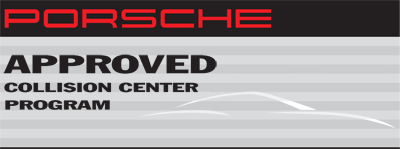Porsche 928: How to Find a Good Paint Shop
Paint jobs are expensive, so there's no reason to pick the first one you find in the yellow pages or see while driving somewhere. Researching your options before you pick a shop can help decrease your risk of getting a bad paint job.
This article applies to the Porsche 928 (1979-1995).
Hiring a shop to paint your car is a decision you can’t take – or make – lightly. Knowing the right questions to ask, as well as who to ask, can help, as can asking a shop for references or to watch them work. Knowing in advance what to expect is one way of easing your mind during the time your car will be at the shop.

Materials Needed
- Internet connection and computer
- PCA or dealership contact
Step 1 – Research shops in your area online
Google paint shops/auto body shops and the city or town where you live. This search should result in a number of viable options. To further narrow the results, also add the search term “Porsche.” We mention this in particular because there are certain body shops that can be Porsche-certified, meaning that they are recognized by Porsche Cars of North America. That doesn't necessarily mean a non-Porsche approved shop will do a sub-par job; it's just something to keep in mind when searching.

Step 2 – Ask a professional for advice
Call your local Porsche Club of America (if you’re a member). It has information about paint shops in your area and can direct you to one or more that it knows is reputable. Similarly, ask your local Porsche dealership about the paint shop it uses when it needs to paint a car. If it doesn’t have firsthand knowledge of how well a local paint shop does, ask if it knows of any customers who have had paint jobs in the area who are happy with the results.
Step 3 – Visit the shops
Nothing beats seeing for yourself just how a shop works. Visiting also lets you see the paint system the shop uses (e.g., Standox, Spies-Hecker, or Glasruit), if it has a paint room and clean room, if the clean room has its own heat source to help paint cure, and if it polishes the paint once it dries. Most reputable paint shops will let you watch them actually painting a car. If the shop refuses to give you a tour of its location or let you see its paint facilities for yourself, then it’s likely not a place to consider choosing to paint your car.

Step 4 – Ask for references
Once you’ve narrowed your list of paint shops to two or three contenders, ask them for contact information for customers. If they won’t give you contact information, ask them to give their customers your contact information. Seeing the shop paint is one thing; hearing how satisfied a customer is after the fact is something else. Once you’re in touch with one or more of these customers, be sure to ask how happy they were with the paint job at first as well as over a period of time. It's also helpful to inquire whether or not the paint job is smooth and if there are any slight imperfections.
Step 5 – Ask for a quote
Ask your top two shops for a quote. Bring them your car, let them inspect it, and let them tell you how much you’d pay and for how long they'll need to keep your car. Don’t ask for an estimate. Estimates can vary from the final cost. Getting a quote lets you know in advance how much you’ll pay, and a difference in price may be the best way to choose between two viable shops, as is the length of time the job will actually take the shop to complete. When thinking about the bottom line, ask about the warranty on their work. Most reputable body shops will offer a lifetime warranty on their work, but make sure to ask before entrusting your Porsche to them.

Related Discussion and Sites
- How Do You Pick an Auto Body Shop? - Rennlist.com
- How to Choose an Auto Paint Shop - Autos.com
- Five Tips for Choosing the Right Auto Body Shop - Edmunds.com
- What to Consider When Choosing an Auto Body Shop - ABCNews.go.com






